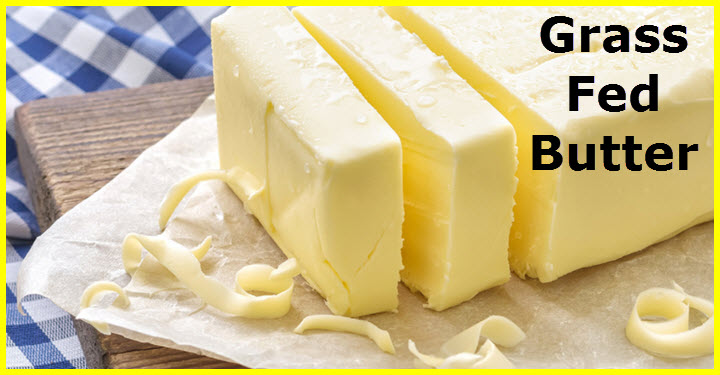Grass Fed Butter Offers More Nutritional Value

image source
The dietary input of the animals that we make butter from is just as important as our nutritional input.
In days gone by all of our farm animals were grass fed and there are still many countries today that grass feed their animals. Unfortunately in North America dairy cows are kept in barns. in a production line type of environment.
In these Concentrated Animal Feeding Operations (CAFOs) conditions are often crowded and unsanitary. The animals are given antibiotics to keep them healthy and hormones for growth.
Cows are usually fed corn silage and soybeans instead of grass. The nutritional value of grass fed butter is far superior to the common commercial butter. The myth about saturated fats causing heart disease and other health disorders dissipates as current research data accumulates. (2, 3). Turns out the real “fat” villains are trans fats, rather than saturated fats like those found in butter. (4) That is also why margarine is so bad for you.
Benefits Of Grass Fed Butter
Grass-fed butter is a rich source of conjugated linoleic acid (CLA) (6), a fatty acid useful in accelerating fat loss. CLA has also been shown to have positive effects on patients suffering from cardiovascular disease, cancer, chronic inflammation, and diminished immune response. (7)
If you’re looking to trim down and add muscle, CLA matters; higher levels of the fatty acid work to decrease body fat while increasing lean body mass. (8)
The amount and quality of the vitamin K2 found in butter matters, too. Vitamin K2 is crucial because it de-calcifies the arteries and keeps them clear. (9, 10) Adequate intake of vitamin K2 helps prevent calcium from leaching out of the bones and depositing in the arteries, decreasing the risk of developing osteoporosis. (11, 12)
One study found that for every 10 micrograms of vitamin k2 they consumed, participants’ risk of developing heart disease dropped by 9%. (13)
Another European trial determined subjects with the highest vitamin K2 intake decreased their risk of heart disease by 57%. (14)
Butter from grass-fed cows is among the richest sources of vitamin K2, along with natto (a fermented soy product), goose liver and egg yolks. (15)
For many years medical professionals have marked high cholesterol as the most reliable predictor for developing heart disease, but now chronic inflammation looks like the forerunner. (16, 17) There can be many causes of chronic inflammation (18), some of which can be moderated by nutritional strategies like following an anti-inflammatory diet.
